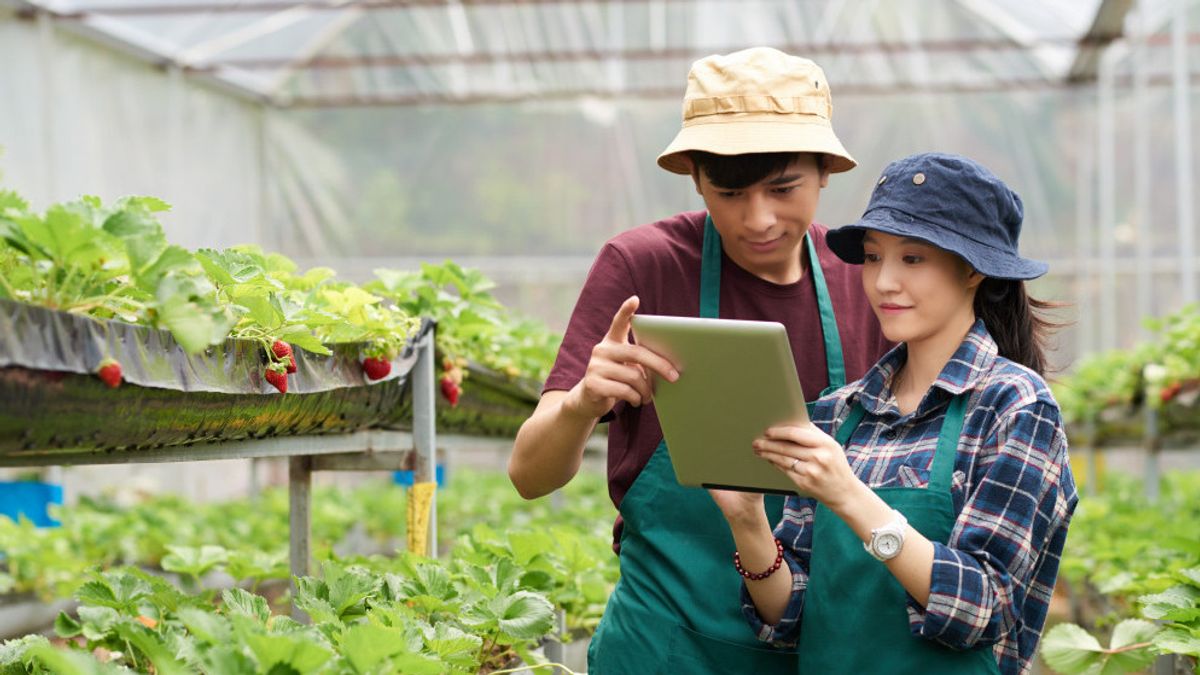YOGYAKARTA - Every time you order an Online Ojek or make a direct payment via an application on your cellphone, you use a digital platform to perform a task that used to be manual. The inclusion of technology in everyday tasks to increase functionality is known as Digitalization. It's time to discuss what digital farming is....
Back in the years, remember when opening a bank account required a visit to the bank and waiting in the long queue? Thanks to recent fast digitizations, complete documents at banks, hospitals, and most private and public sector organizations seem to be decreasing as their businesses shift to online. Digitalization has reduced manual work - which is time-consuming, error-prone, and inefficient, saving millions of companies.
With the advancement of AI, data analysis capabilities have improved considerably so that all the equipment in our homes can be managed by virtual assistants who can understand human voice commands and respond. It is proven to be an advantage for each sector, agricultural digitization slowly also revolutionizes this broad and complex sector that remains the center of the world's economy as more than 60% of the global population relies on it to survive.
Digital agriculture is the integration of digital technology into livestock and plant management as well as other processes related to cultivation and food resource management. This term is often used to explain the differences in the use of various data collected in this sector. But this is also about how technology is integrated and works throughout the supply chain, from seeds or livestock to consumers.
How Digital Agricultural Adoption Takes place
McKinsey analysts describe the world's food producer as "the least digitalized industry". But some will argue that this means that the agricultural industry is ready to be disrupted. Here are some ways digital innovation is starting to change the agricultural industry.
IoT and Sensors
Using the Internet of Things (IoT) and sensors, breeders can track live and produce animals, evaluate environmental factors and livestock health. This gives farmers and partners real-time visibility throughout their operations.
Robotics
The latest generation of farmers are now deploying robots to plant and reap crops and feed and slaughter livestock. The current market for agricultural robots is worth more than $5 billion, and is expected to double in the next five years.
Artificial intelligence
Many agriculture to date is based on trial or knowledge passed down from people who have a deep understanding of this industry. This creates challenges for newcomers to the industry, who have suffered a lot of harm. Artificial Intelligence (AI) can be a tremendous asset for veteran farmers and new farmers. This can help these professionals get the information they need quickly and avoid inefficiencies.
Drone
Drones have become very common in the agricultural industry. In China, they are used to survey 20 million hectares of cotton plants, observe things that humans may not be able to see in the field. Drones can provide insight into harvest time, irrigation, pest protection, and more.
Cloud Connectivity
Cloud-based connectivity uses a real-time internet connection to offer farmers more flexible digital solutions and an economic scale. Many farmers are not connected at all. So adopting cloud connectivity is a massive increase, where farmers can see and achieve more in real-time.
Data Analysis
In 2025, the world will store 175 zetabytes of data. That's a lot of information to digest. Fortunately, some innovators create tough solutions that help those in the agricultural industry collect, store and understand data.
Benefits of Digital Agriculture
Digital agriculture is much more sustainable and efficient than traditional agriculture. Bringing technology to the agricultural sector involves various strategies, including artificial intelligence, the Internet of Things, mobile technology, and other digital solutions. Some of the many benefits that come with digital agriculture include:
Efficient Communications
Automatic workflows are becoming very valuable for the team in the agricultural industry. Using ancient paper forms and spreadsheets, data needs to be collected manually, sent, and then processed.
With automated data collected through technologies such as RFID tags and other cellular computing solutions, agricultural data can be collected easily in the field and sent directly to management and other supply chain partners. This not only increases operational efficiency but also creates more visibility across food supply chains.
Effective Monitoring
Technology can allow farmers to better monitor the health of their livestock and plants. Tools like sensors that can be used for livestock can monitor temperature, and drones are now used to survey land, assess soil quality, and plan seed planting patterns. Farmers can use animation to predict the success of various strategies. This solution also helps them manage and monitorAM activity and pests during their operations.
Better Documentation
When farmers produce food that ends up on consumer tables, they have to document everything. This is a highly regulated industry. But manual forms don't allow digital attachments, making the whole process more tedious and take more time than necessary.
By digitizing their operations, farmers can fill in and submit the required form directly from their mobile device. The form can include the GPS coordinates taken, allow for uploading photos and videos, and even include a digital signature box.
More Informationed Decisions
Successful agriculture is based on a series of appropriate options when to grow crops, how to grow them, when to harvest them, with what partners, what to pay, etc. Digital technology gives farmers detailed insight to better understand their performance and the information they need to make a more precise decision.
It's also important to note that more data is available than ever before, making it almost impossible to interpret what is collected without help. Agricultureed companies can now leverage Big Data to solve a number of issues or prevent problems related to planting, harvesting, selling, and transporting yields.
Save Time and Money
One of the greatest drivers to embrace digital agriculture is its ability to save time and money from farmers. By managing the fields more effectively using GPS technology and advanced insights, a farmer may be able to increase their crops and complete work faster, thereby reducing costs.
Of course, most technology solutions have price labels. But those upfront costs can be quickly re-obtained as farmers begin to realize time and cost savings associated with greater efficiency and better visibility.
While digital agriculture is still in the pioneering and innovation stages, many businesses associated with this industry are starting to pay attention. Supply chain challenges over the past few years have prompted businesses to invest in digital upgrades such as automation, RFID tracking, mobile computing, and wireless infrastructure. This investment will increase efficiency, increase visibility across supply chains, and increase overall returns.
So after knowing what digital farming is, watch other interesting news on VOI, it's time to revolutionize news!
The English, Chinese, Japanese, Arabic, and French versions are automatically generated by the AI. So there may still be inaccuracies in translating, please always see Indonesian as our main language. (system supported by DigitalSiber.id)









